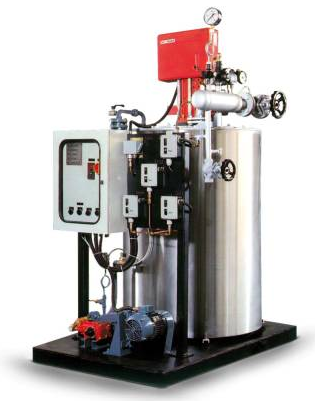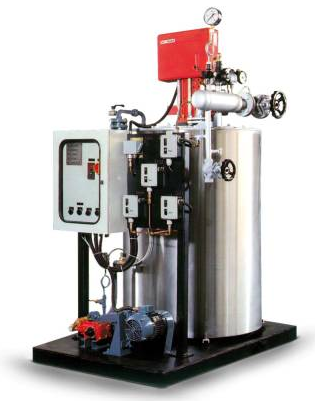Small Steam Boiler
Steam boilers have been around for centuries and have played a significant role in powering industries, homes, and transportation. These handy machines generate steam by heating water to create power that can be used for various applications. But if you’re thinking of building your own small steam boiler, where do you even begin? In this blog post, we’ll explore the essential components of a steam boiler, how it works, and why building one could be an excellent idea. Plus, we’ll reveal the best way to build a small steam boiler that meets your needs! So sit back, and let’s dive into the world of steam power together!

Components of a Steam Boiler
A steam boiler is a complex machine that operates on the principle of generating steam to create power. It consists of several components, each designed to work together seamlessly for optimal performance. The firebox needs careful engineering to ensure it can handle high temperatures without cracking or warping. The drum must be strong enough to contain high-pressure steam and hot water. Connected directly above is a network of tubes through which hot gas travels from the firebox into the water tank, heating it up to produce pressurized vapor for various applications.
Safety valves regulate pressure levels within safe limits, while blowdown valves remove impurities like sediment buildup within these systems before they cause damage over time. Understanding these key components is essential if you plan on building your small steam boiler. With some knowledge about their functions and how they interconnect with one another, anyone can piece together an efficient system capable of powering different types of machinery!
How a Steam Boiler Works
A steam boiler is a device that converts water into steam by heating it via combustion of fuel or electric resistance. The process involves several essential components that work together to facilitate the conversion. The primary component of a steam boiler is the water chamber, where water is stored and heated until it reaches its boiling point. The heat source can be generated through various means, such as burning wood, coal, or oil in a furnace or using an electrical element.
Once the water temperature reaches boiling point, steam starts forming inside the chamber. This steam then rises to leave the top of the chamber and travels through pipes for distribution throughout your home or facility. To prevent excess pressure build-up within the system, most boilers also have safety valves installed alongside gauges that measure pressure levels and temperatures at different points in the system. Steam boilers are incredibly versatile machines used in many industries because they generate high-pressure saturated or superheated steam with temperatures reaching up to 1000°F!
Why Build a Small Steam Boiler?
- Building a small steam boiler can be an attractive option for those who want to explore the world of steam power. There are multiple cause why one might choose to build a small steam boiler, ranging from practical applications to personal interests.
- One practical application of a small boiler is for heating purposes in homes or businesses. Steam boilers can provide efficient and even heat throughout a building with minimal energy consumption. Additionally, some people may find it more satisfying to generate their own heat rather than relying on conventional methods.
- Another reason why someone might opt to build a small boiler is for educational purposes. Learning about the inner workings of this type of machinery can be fascinating and engaging, particularly for individuals interested in science or engineering.
- For others, building a small boiler may simply be a fun hobby or pastime. The process of constructing something by hand from raw materials can be rewarding and fulfilling, especially if it results in a functioning machine that produces visible results.
The Best Way to Build a Small Steam Boiler
- It’s essential to understand the components of a steam boiler, how it works, and why you may want to build one before starting your project.
- You could purchase a pre-made kit or use online plans as a guide. However, if you have experience in welding and fabrication, you may decide to design your own custom boiler.
- Steam boilers operate under high pressure and temperature conditions, which can be dangerous if improperly handled.
Types of Steam Boilers
There are several types of steam boilers available in the market. Each type differs based on design, application and fuel source.
- One common type is the fire-tube boiler which has tubes surrounded by water and heated by hot gases from a burner. Fire-tube boilers are commonly used for low-pressure steam applications.
- Another popular type is the water-tube boiler which consists of water-filled tubes that circulate through a furnace surrounded by hot gases. Water-tube boilers are ideal for high-pressure steam applications.
- Electric boilers use electricity to heat up the water inside them, making them efficient for small-scale operations like heating homes or small buildings.
- Combination (combi) boilers have both a central heating system and an instantaneous supply of hot water in one unit, making them space-saving options for homes with limited space.
- Biomass-fired boilers use renewable sources like wood pellets as fuel instead of traditional fossil fuels such as oil or gas. This makes them eco-friendly alternatives while still providing reliable heat sources.
- Knowing the different types of steam boilers can help you identify which one will work best for your specific needs and preferences.

